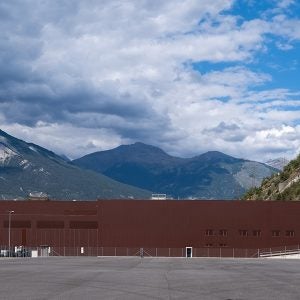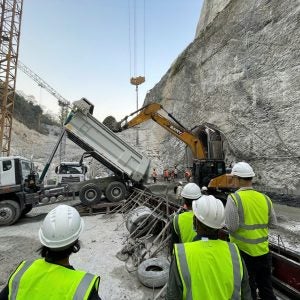The project – to raise the full supply level of the dam in the state of Cordoba – required the removal of a 5.2m high section of the existing concrete spillway and structural modifications to the remaining crest to accommodate Fusegates.
DecoTEC’s contract, with operating authority Empresa Urra, was the first work of its kind by an Australian company in Columbia and worth an estimated 5% of Australia’s annual export trade with the South American country.
The company made use of wire-sawing and concrete bursting at the project, instead of conventional demolition using hydraulic breakers, as this could cause micro-cracking to the remaining structure.
Application of the wire-sawing involved a series of innovative solutions to complete unusually deep and accurate cuts. “The cross-section of the dam wall was 12m deep and the design called for a fall in the cut profile of 2%, so accurately drilling the hole for the wire was vital,” explained Alan Moss, DecoTEC managing director.
Access to the work area was difficult and working platforms had to be designed and constructed on both the upstream and downstream faces of the dam.
To maintain vehicle access to the bridge that tops the dam, a 120 tonne crane was set up on the abutments. A series of comprehensive studies were undertaken into the complex rigging requirements involved in using the crane to remove the concrete blocks from under the bridge deck.
The Colombian project was logistically complicated by the location of the dam on the remote Sinu River: “As anticipated, the bigger challenges were logistical rather than technical, due to the extreme isolation of the dam, the language barrier and the custom clearance arrangements for importing plant and equipment to Colombia,” said Moss.
“To overcome these challenges required significant co-operation between DecoTEC’s Australian and New Zealand-based technicians, the Columbian employees and the Urra Dam’s project manager.”

Modification work underway at Urra Dam






